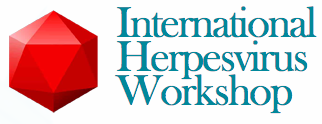Notes from members of ProjectAccept.org’s advisory council
Vaccine Strategy: David Knipe is working with Sanofi on an HSV-2 vaccine; it’s a live, attenuated strain (deleted in a number of genes). Right now, he showed protection from primary infection in mice, and he’s answering a question right now about it being much easier to develop these things for prophylaxis (preventing acquisition), and much harder to develop for therapeutics (treatment after infection). The neat thing about Knipe’s stuff is that they’re not subunit vaccines; they’re developed from live viruses (with the dangerous genes turned off), which have much more potential to create a stronger immune response.
Harvey Friedman argued that the primary goal of vaccines right now (as outlined by David), of protection from disease, is not enough; he said that we need to prevent disease AND reduce shedding. David Knipe took it in stride, countering that we need to accomplish one before the other. Harvey showed data on a combined gC/gD/gE trivalent subunit vaccine with a good adjuvant. Challenge of the guinea pigs was good prophylactically, but therapeutic use was not really examined. They DID still see shedding, at a low level, from the guinea pigs that were immunized, though.
Viral Resistance: The levels of acyclovir (and penciclovir) resistance in the natural population of viruses appears to be somewhat higher than previously expected. This would be of more concern to immunocompromised patients, and rather little concern to immunocompetent (“normal”) patients, as the immune systems of the latter are quite capable of tackling what little virus evades drug therapy.
It seems that treatment, whether acute or long-term, has no selective pressure on the viruses being produced by immunocompetent patients; the level of resistant viruses remains the same in them regardless. [Since they are already successful, there is no natural need for them to evolve beyond where they are. In other words, their evolution is on hold: they don’t evolve endlessly; they evolve only as much as they need to in order to survive.]
In that vein, it seems that the viruses that are resistant to ACV/PCV are also resistant to Foscavir, which is a little odd (the drugs bind to different sites on the DNA polymerase, so you would expect synergy, not synchrony). However, from one presentation here, it seems that the ACV/PCV-resistant viruses are exquisitely sensitive to ganciclovir and cidofovir (which, curiously, we expect bind at the same sites on the DNA polymerase as ACV/PCV).
Research Updates: German company AiCuris working on helicase/primase inhibitors, once/day dosing about 75 mg oral, great activity profile, some weirdo oral toxicity, though, which has been an issue. Might be a good candidate for co-formulation. [Ed. note: the recent trial of this drug has been terminated for safety issues. However, work on it has not been abandoned altogether.]
More to come…









